Vokrug Sveta magazine
Vokrug Sveta is the exemplar of an educational periodical, with a history of over 150 years. The revised version of the magazine that came to life thanks to the effort of Masterskaya employees still has few Russian counterparts that could measure up to its careful preparation and high-quality production.
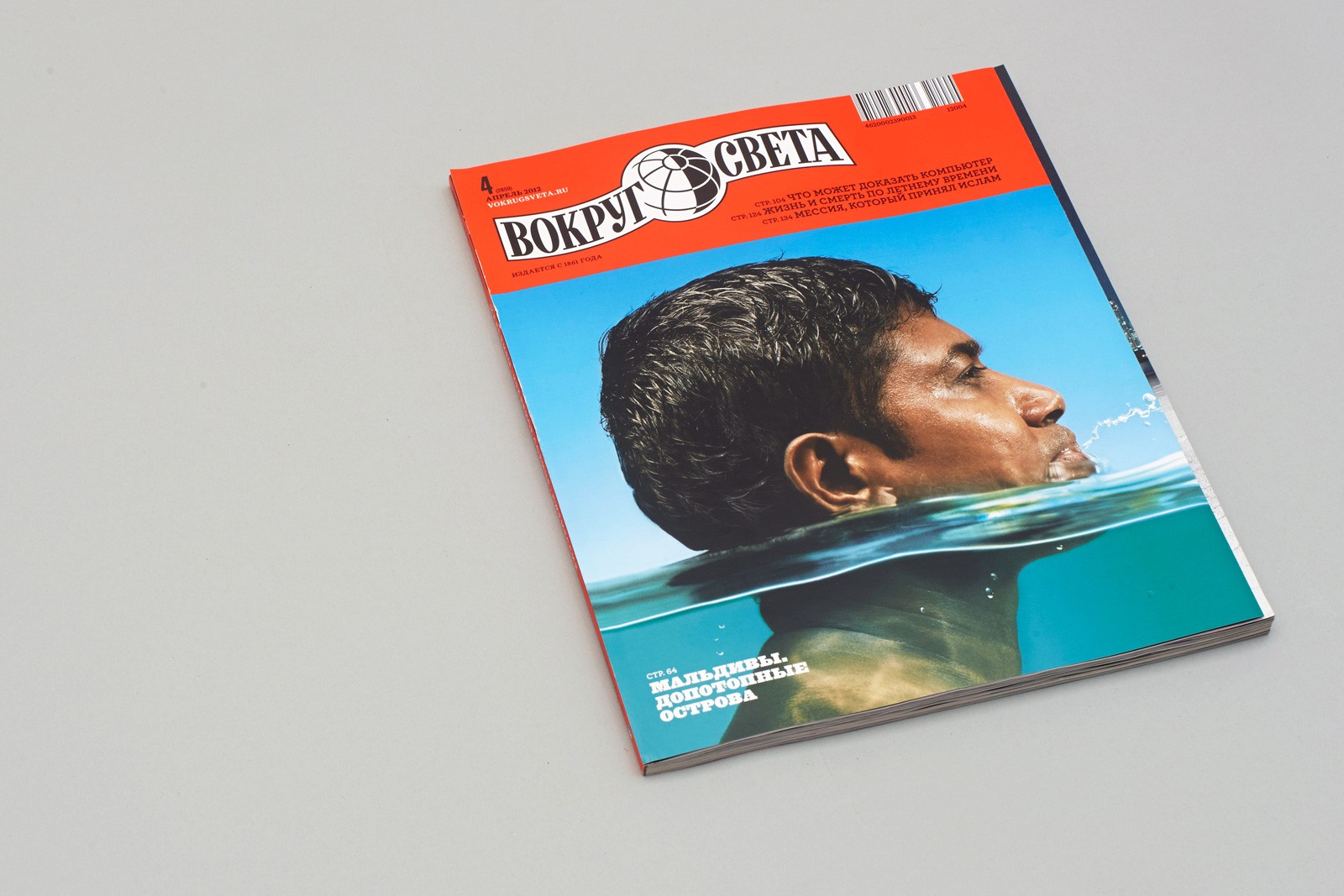
1. Team
Creative Direction
Anton Fyodorov
Dima Barbanel
Typefaces and Logo
Yuri Gordon
Valery Golyzhenkov
Aleksey Chekulaev
Typeface Prototype
Ivan Rerberg
Iconography
Sergey Kalinin
Infographics
Alexey Novichkov, Vadim Ilyin, Kirill Khachaturov
Pagination
Zhdan Filippov
Illustrators
Eldar Zakirov, Irina Batakova, Irina Andryushchenko, Rostom Chichyants, Maksim Degtyaryov, Valentin Tkach, Sergey Kalinin, Yuliya Kharina, Dmitry Litvin, Dmitry Ligay, Yuliya Blyukher, Aleksandr Utkin, Darya Rychkova, Yevgeny Tonkonogy, Natalya Toropitsyna, Viktoriya Semykina, Yana Kutyina, Andrey Belonogov, Oksana Alekseyevskaya, Marina Novikova, Wesley Allsbrook, Julius T. Csotonyi, Ryan Graber
© Masterskaya, 2010–2012
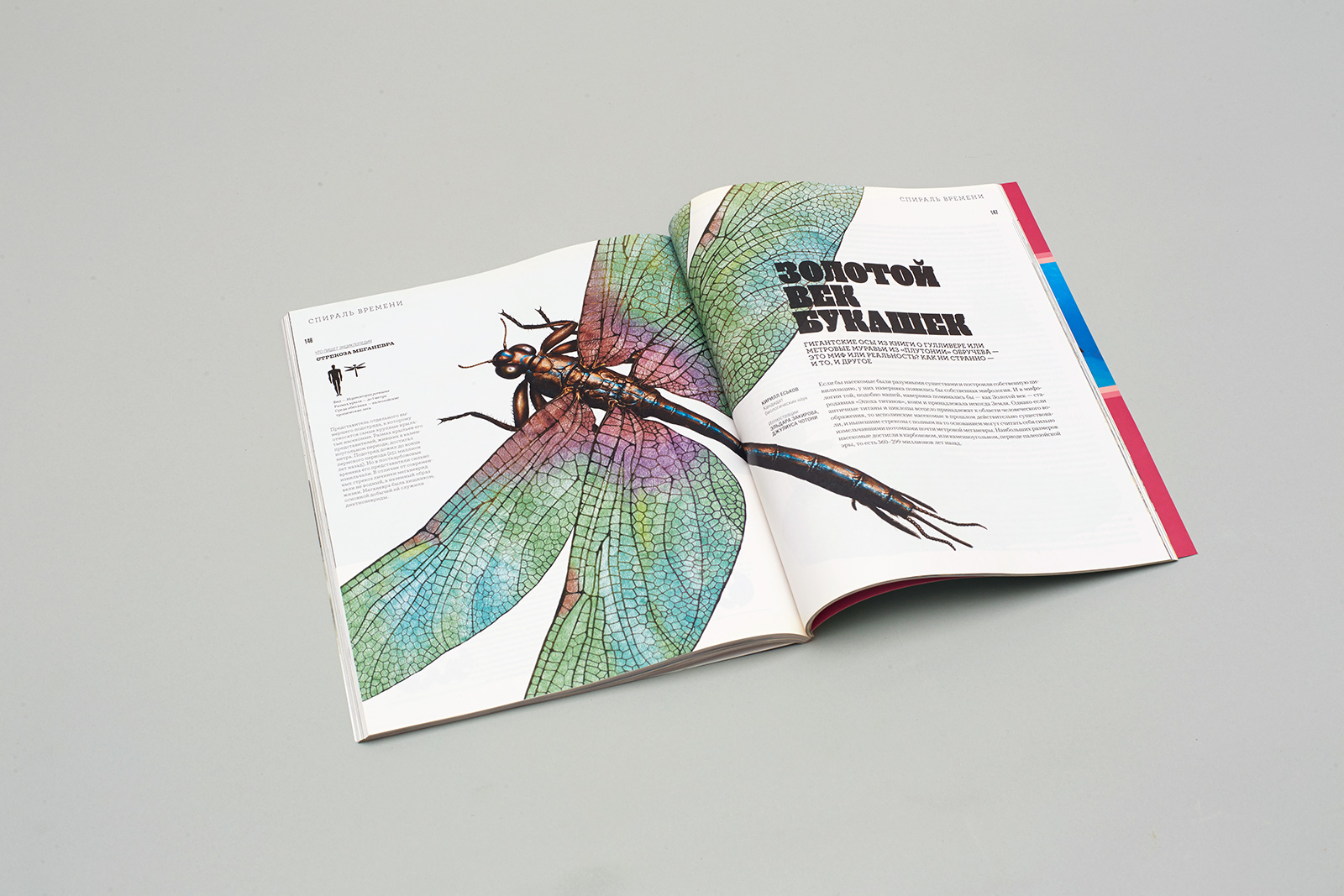
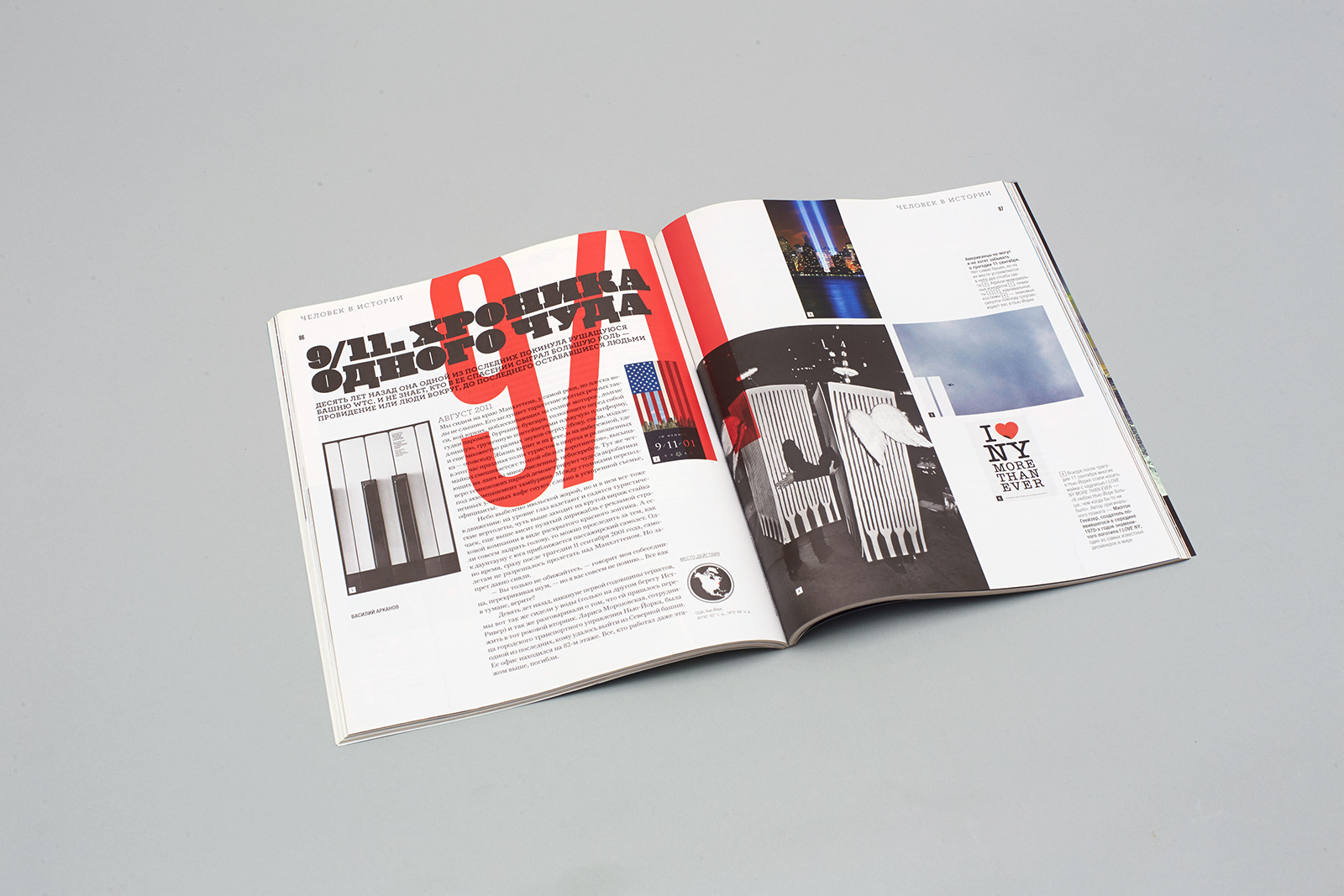
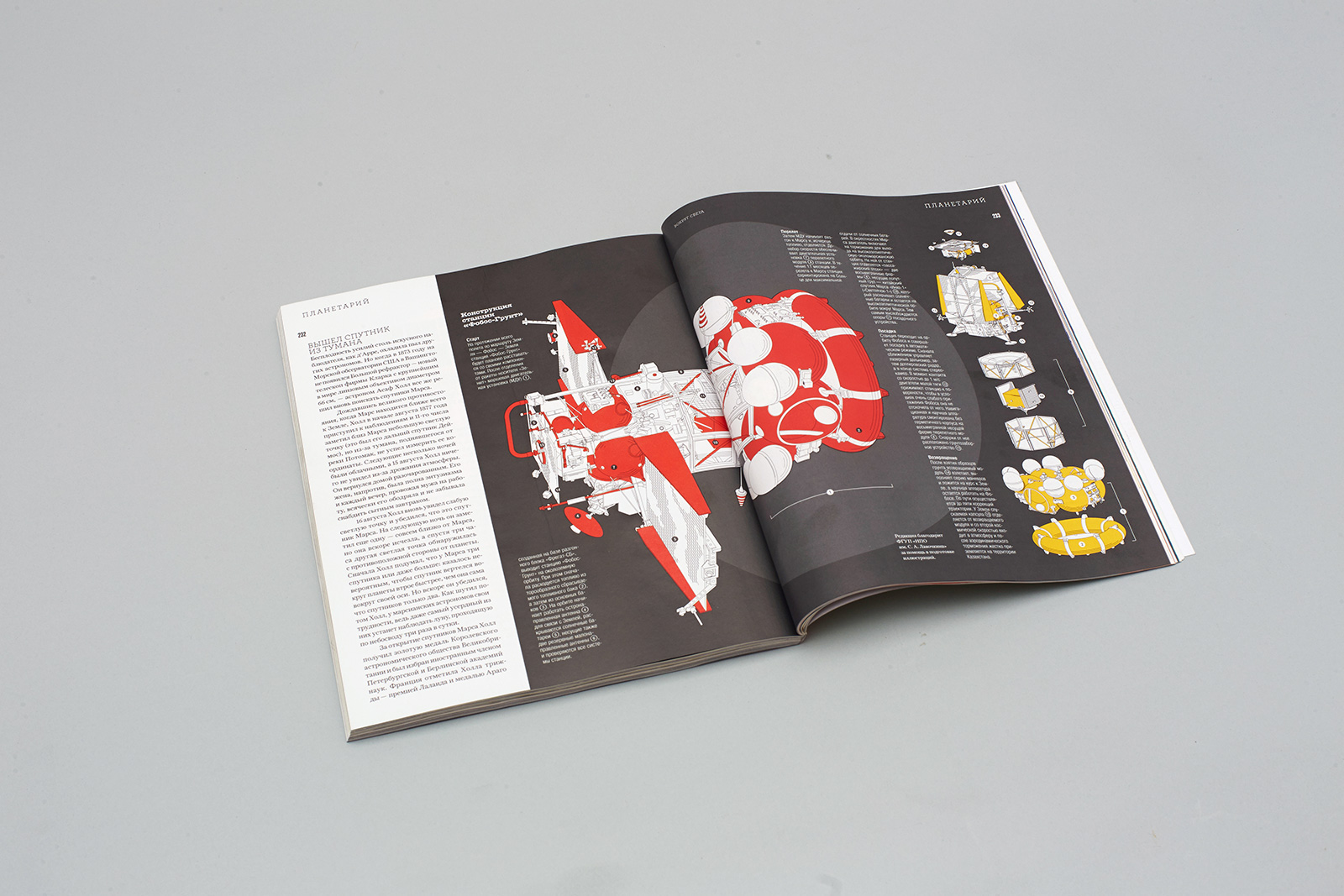
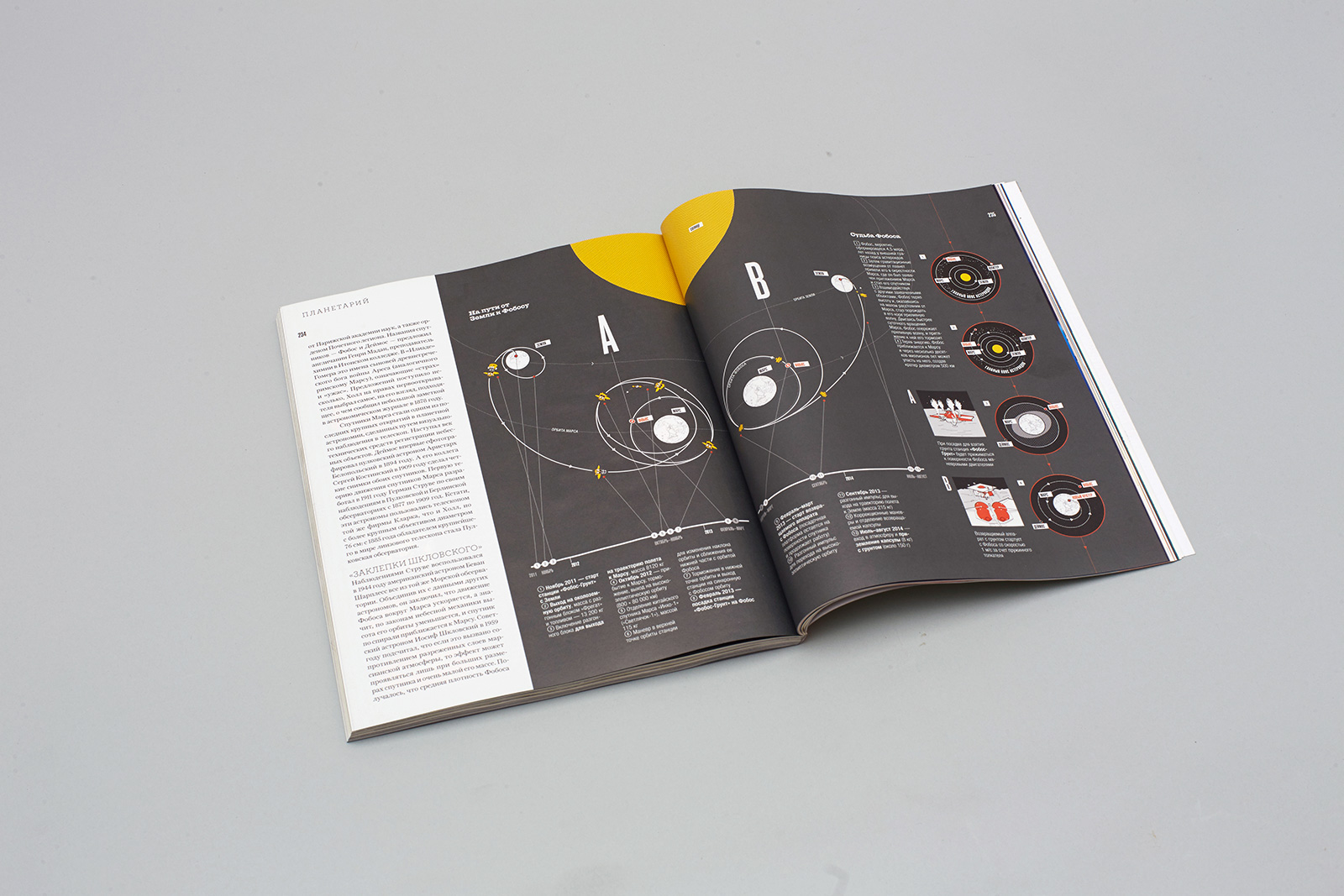
Russia’s Phobos-Grunt spacecraft. The diagram showing the separation sequence of spacecraft units during the flight and the spacecraft’s path from Earth to Mars and back. Illustration by Eldar Zakirov.
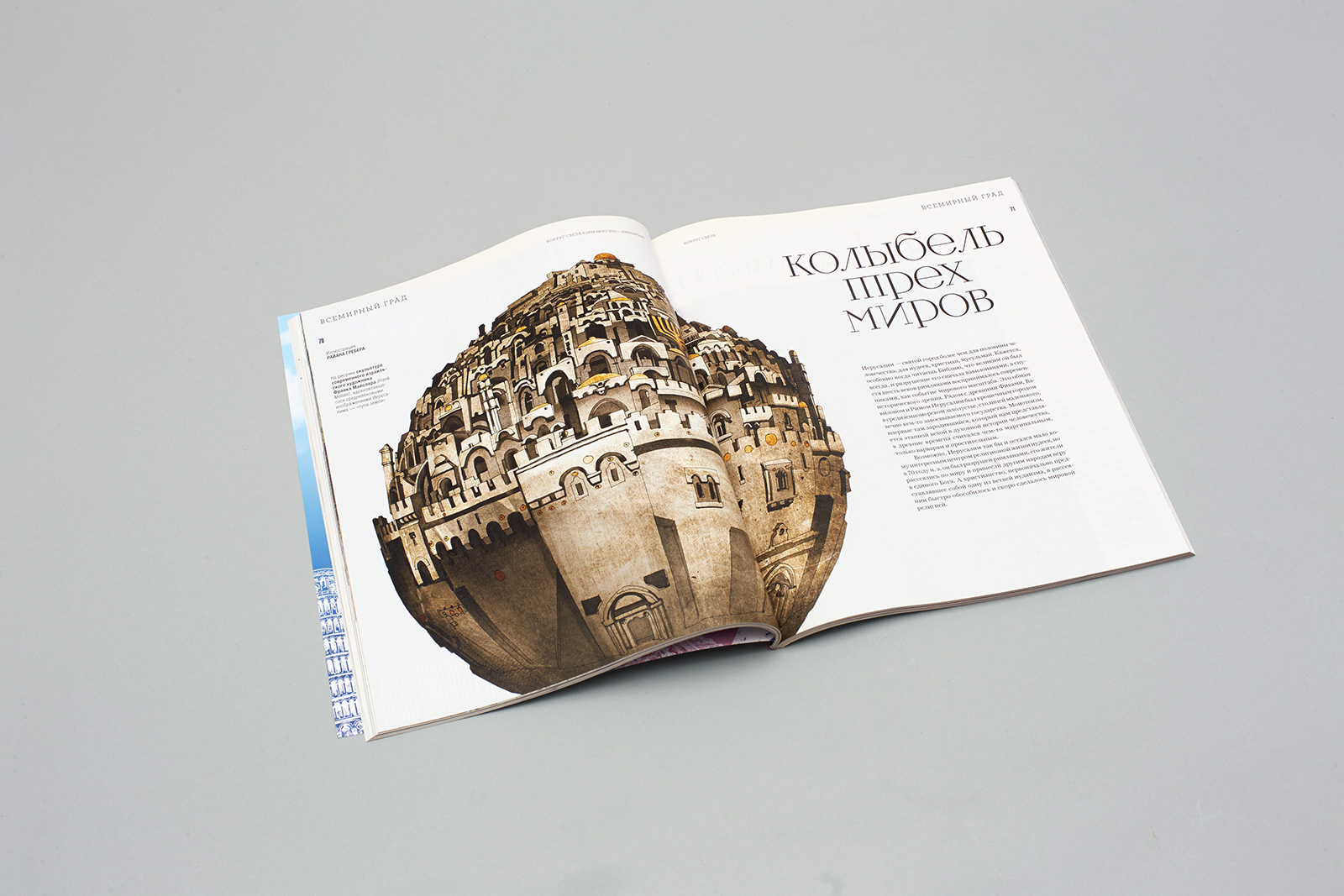
2. Idea
The idea behind the revised Vokrug Sveta magazine was not only to carefully preserve its heritage but also to use certain valuable features of encyclopedias, science books, educational films and topic-related magazines, including foreign ones.
New illustrations, maps, diagrams and photographs are intended to recreate that childhood feeling of excitement that we experienced when we encountered outstanding examples of educational literature and films.
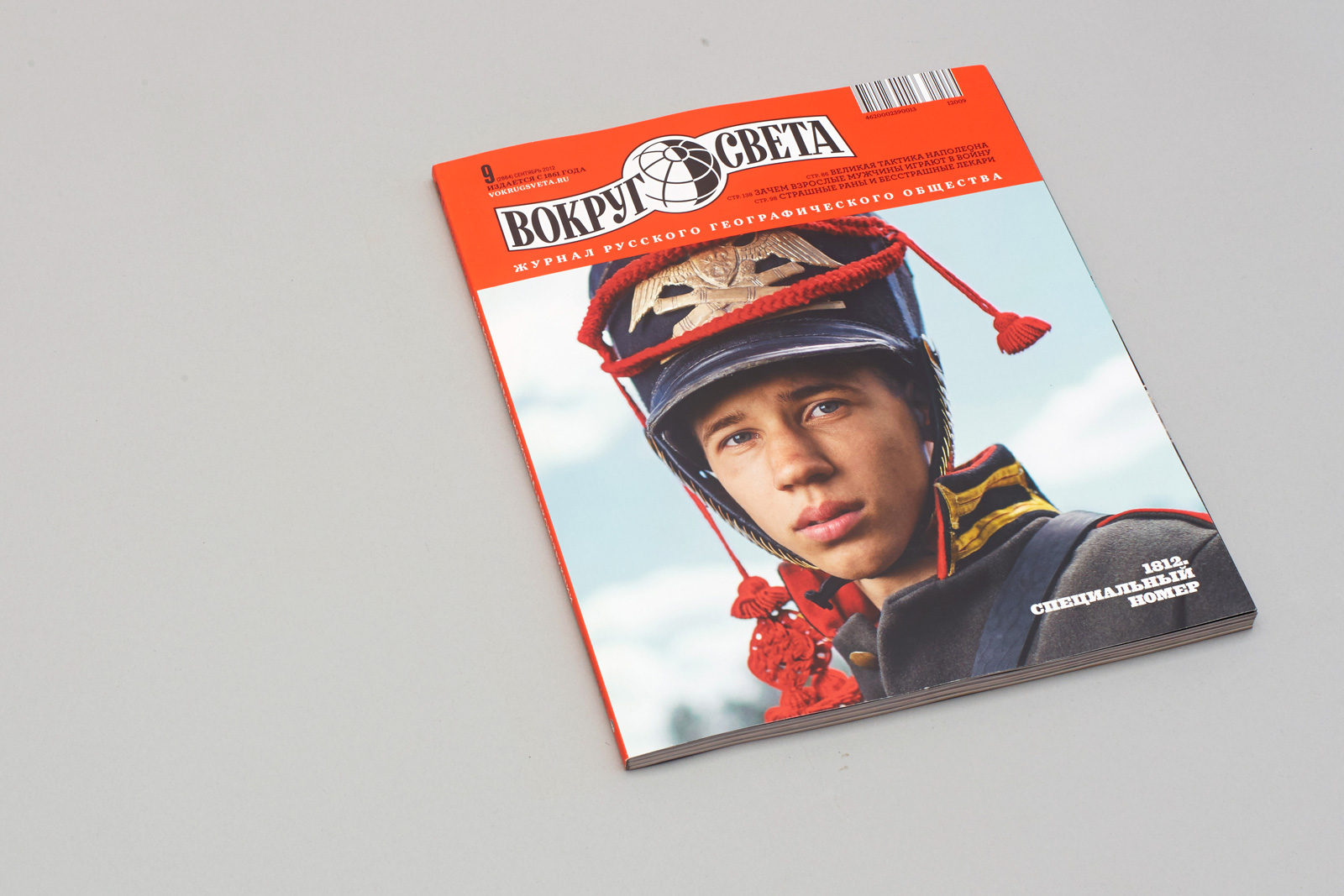
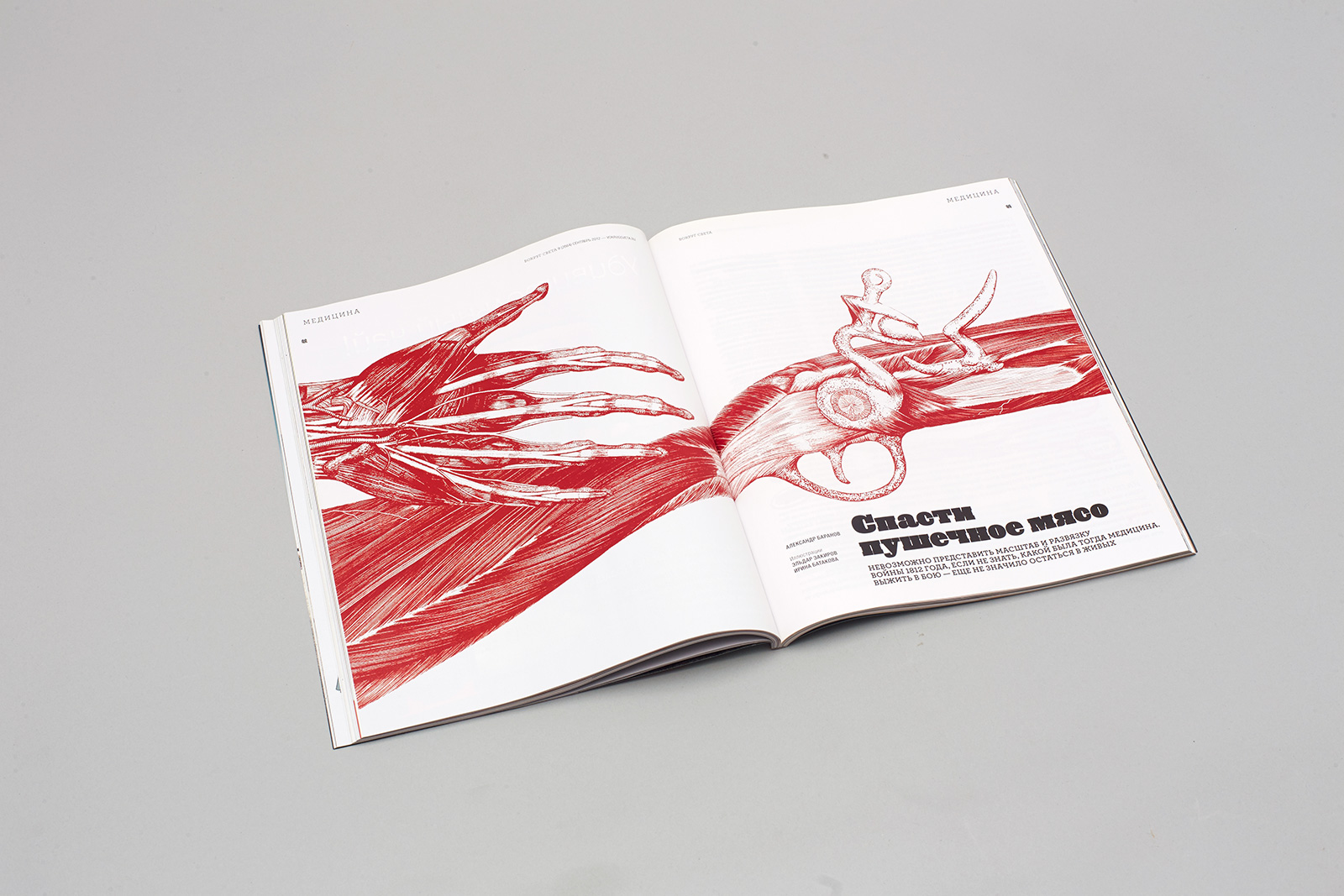
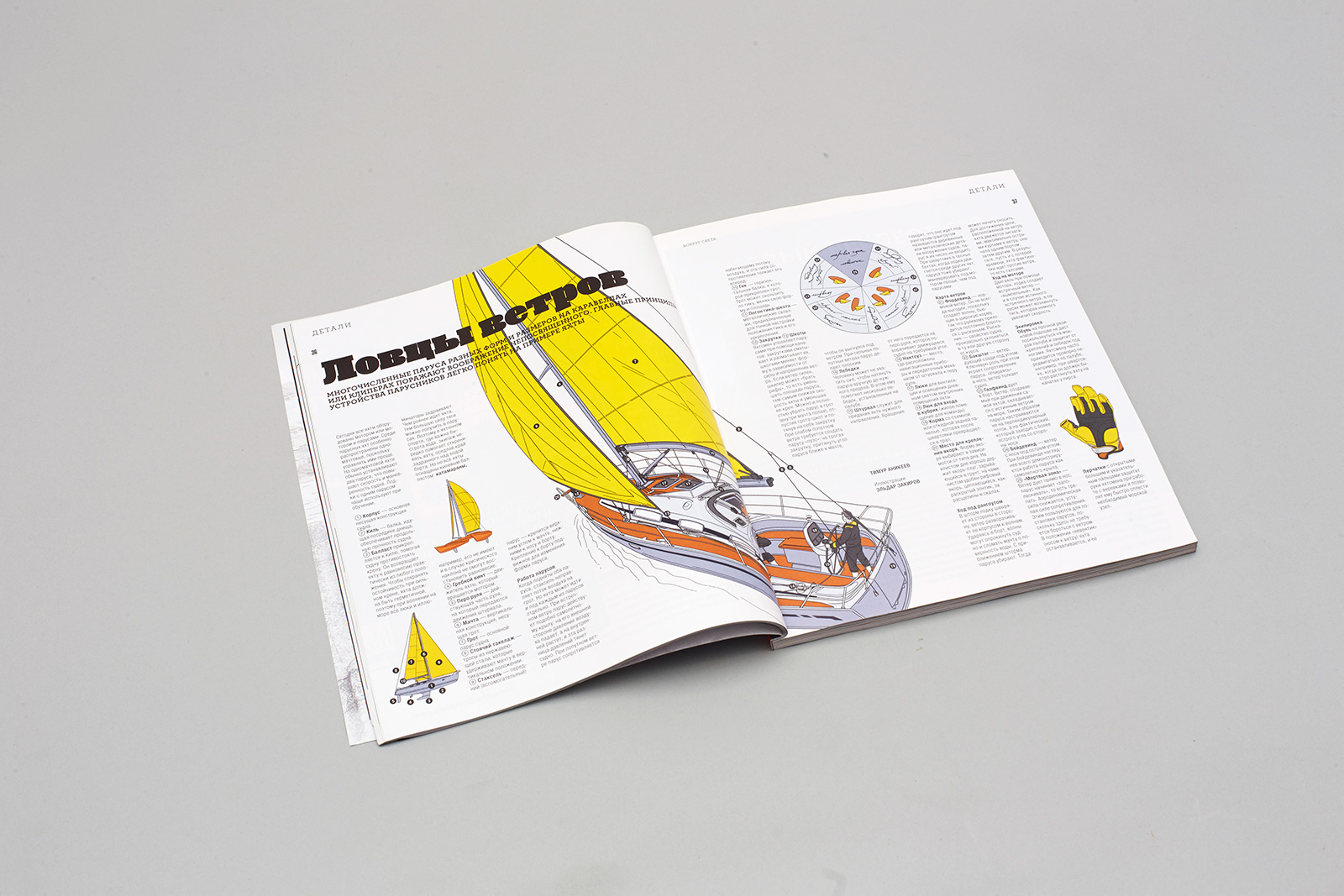
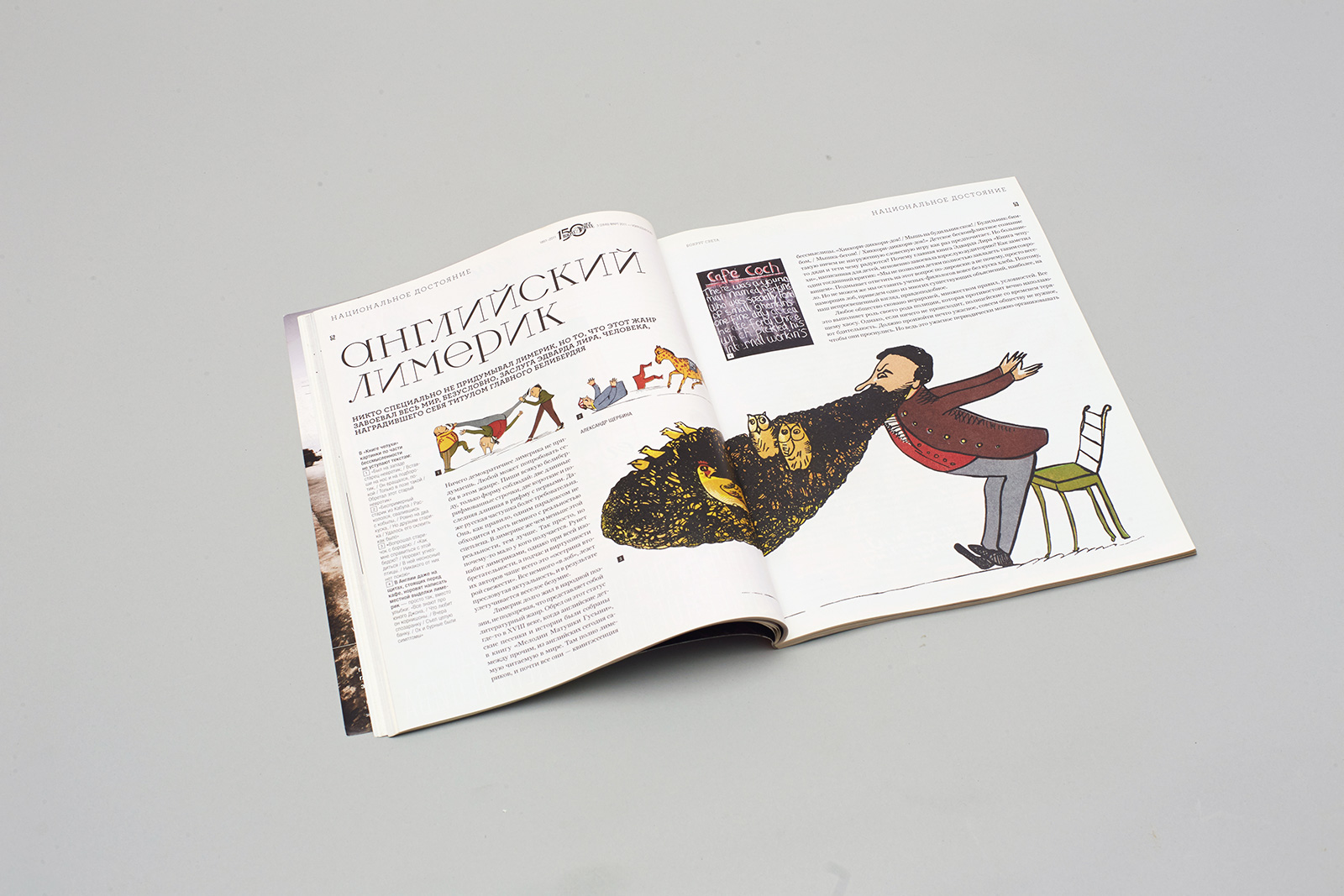
3. Solution
Our work began with a very careful editing of the logo that first appeared when the publication of the magazine was resumed after the end of World War II and had kept its original design up until the dissolution of the Soviet Union.
Yuri Gordon developed a digital version of Ivan Rerberg’s typeface that the magazine had used in the 1950s. Apart from such additions as a unicase typeface and new symbols, a Latin version of this typeface was created.
The layout design required a delicate approach towards photographs and illustrations: the module grid made formal cropping impossible.
Gradually, we saw the development of the Vokrug Sveta signature approach to illustrating various types of material — from scientific to entertaining. Techniques employed ranged from ink drawings to 3D modeling, but the high standards of classical drawing remained unchanged, namely, the careful attention to form, proportion and perspective.
A number of infographics were created through painstaking research carried out by editors, authors and consultants.
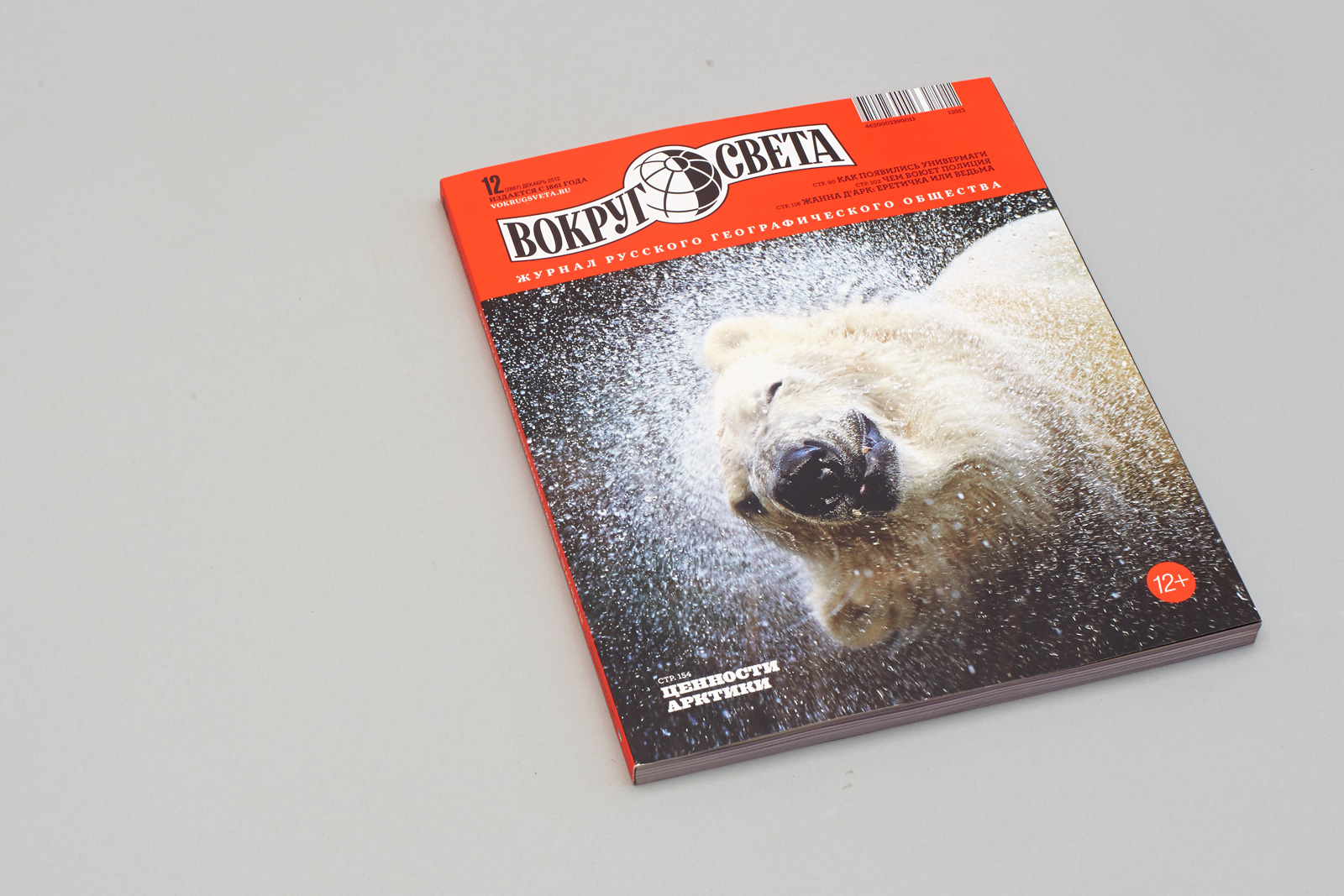
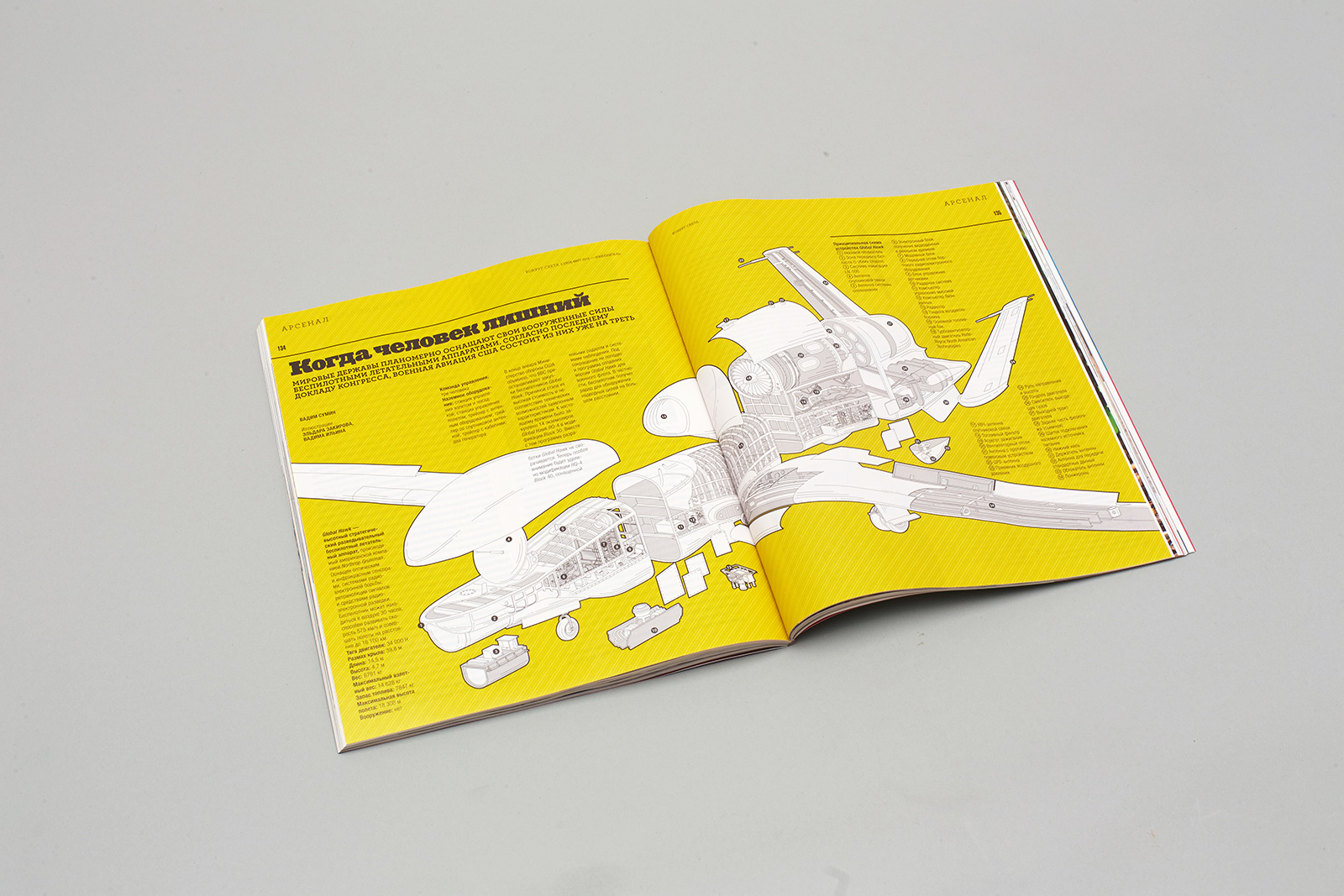
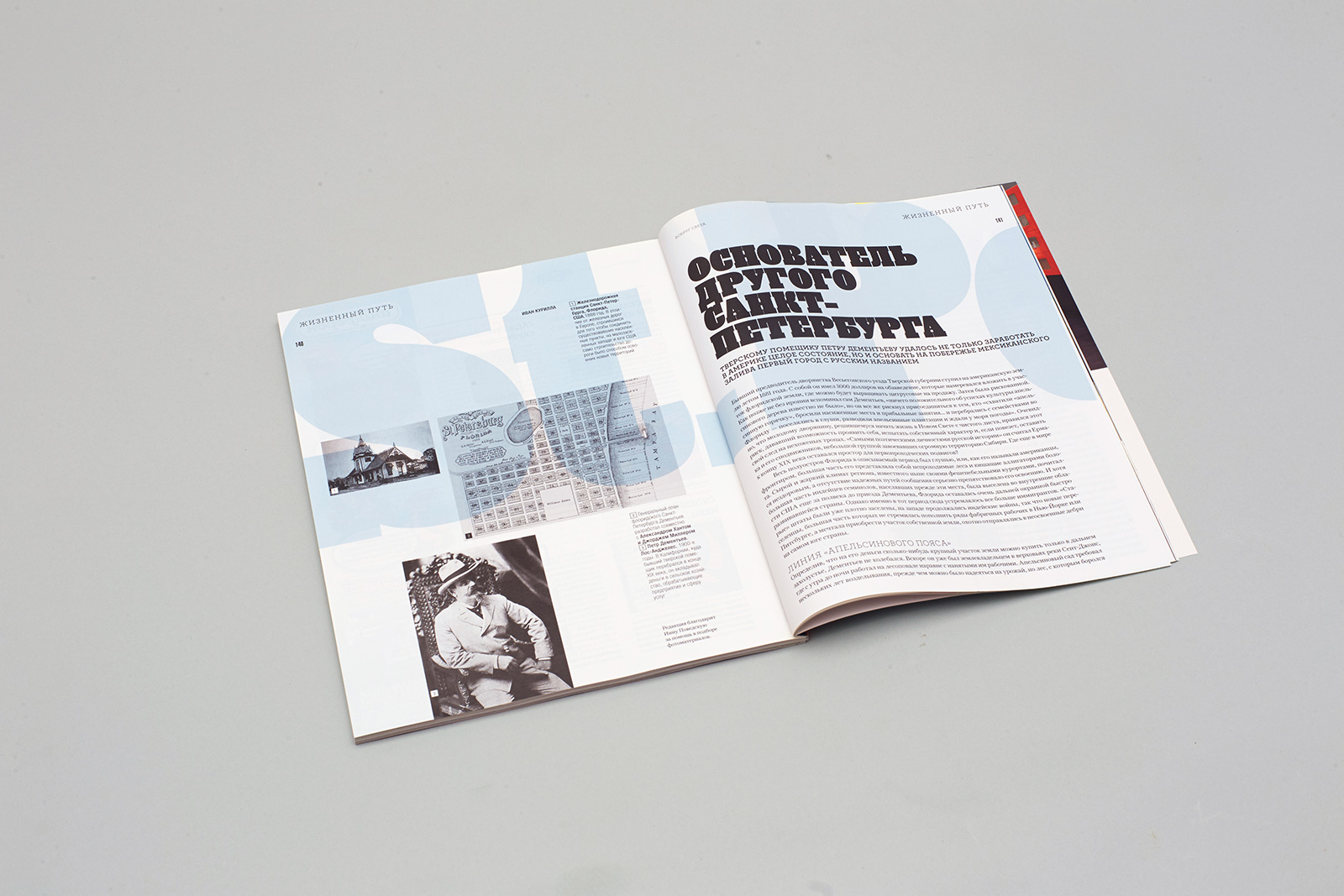
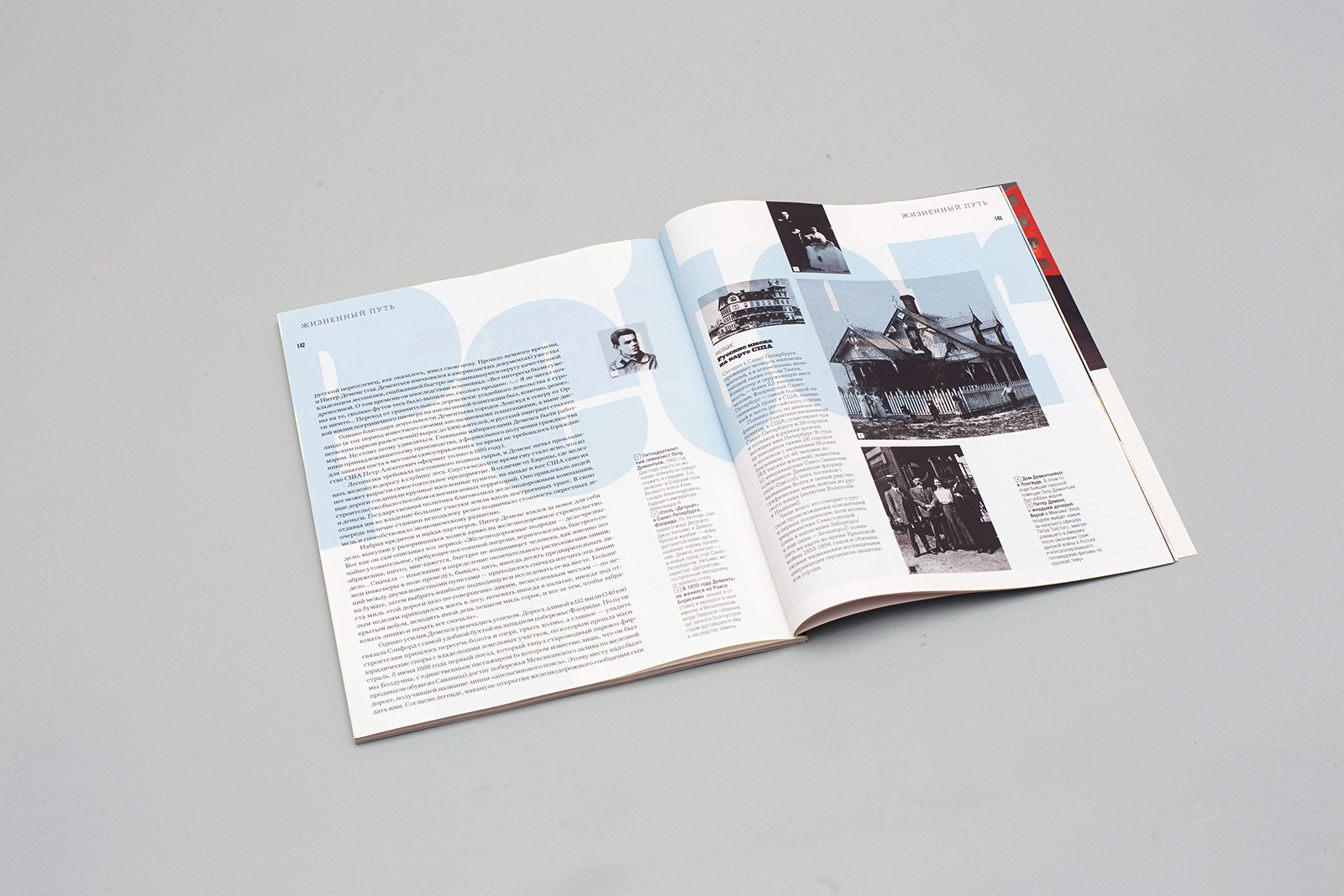
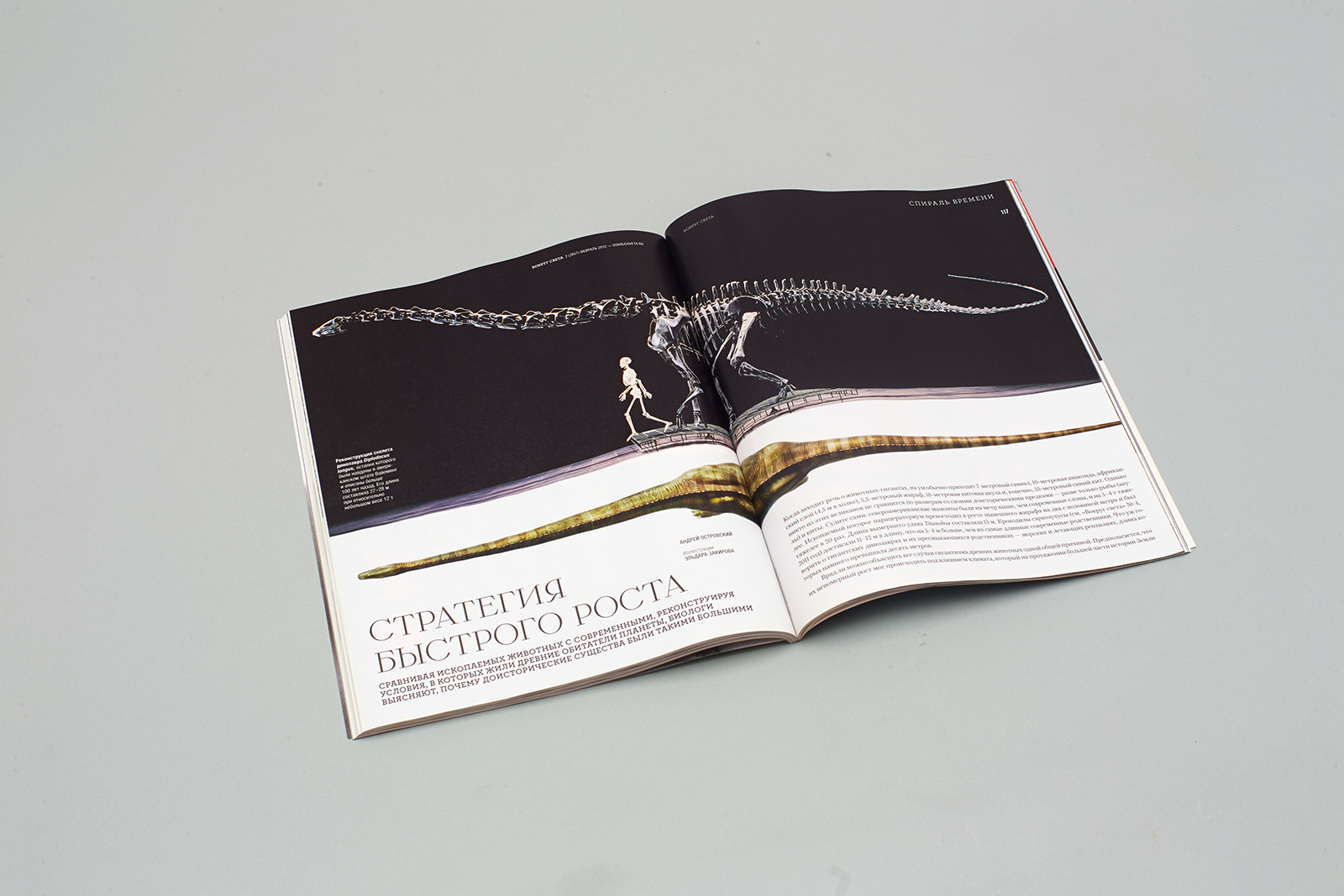
4. Typefaces
The Vokrug Sveta typeface is based on Ivan Rerberg’s font family, one of the best examples of the Soviet Empire style.
An antiqua, which initially consisted of capital letters only, was turned into an ironic unicase typeface with elements of the civil font introduced by Peter I.
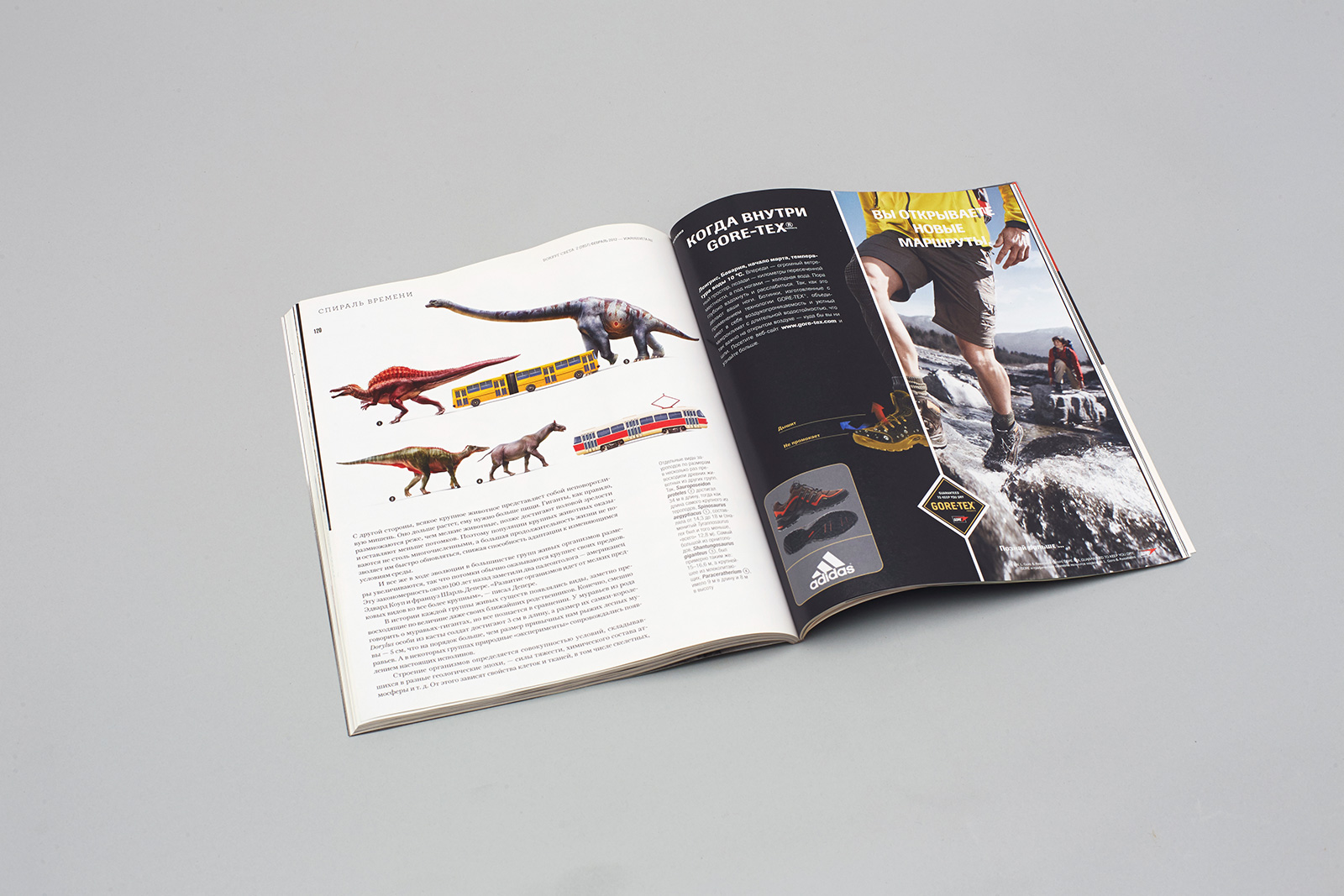
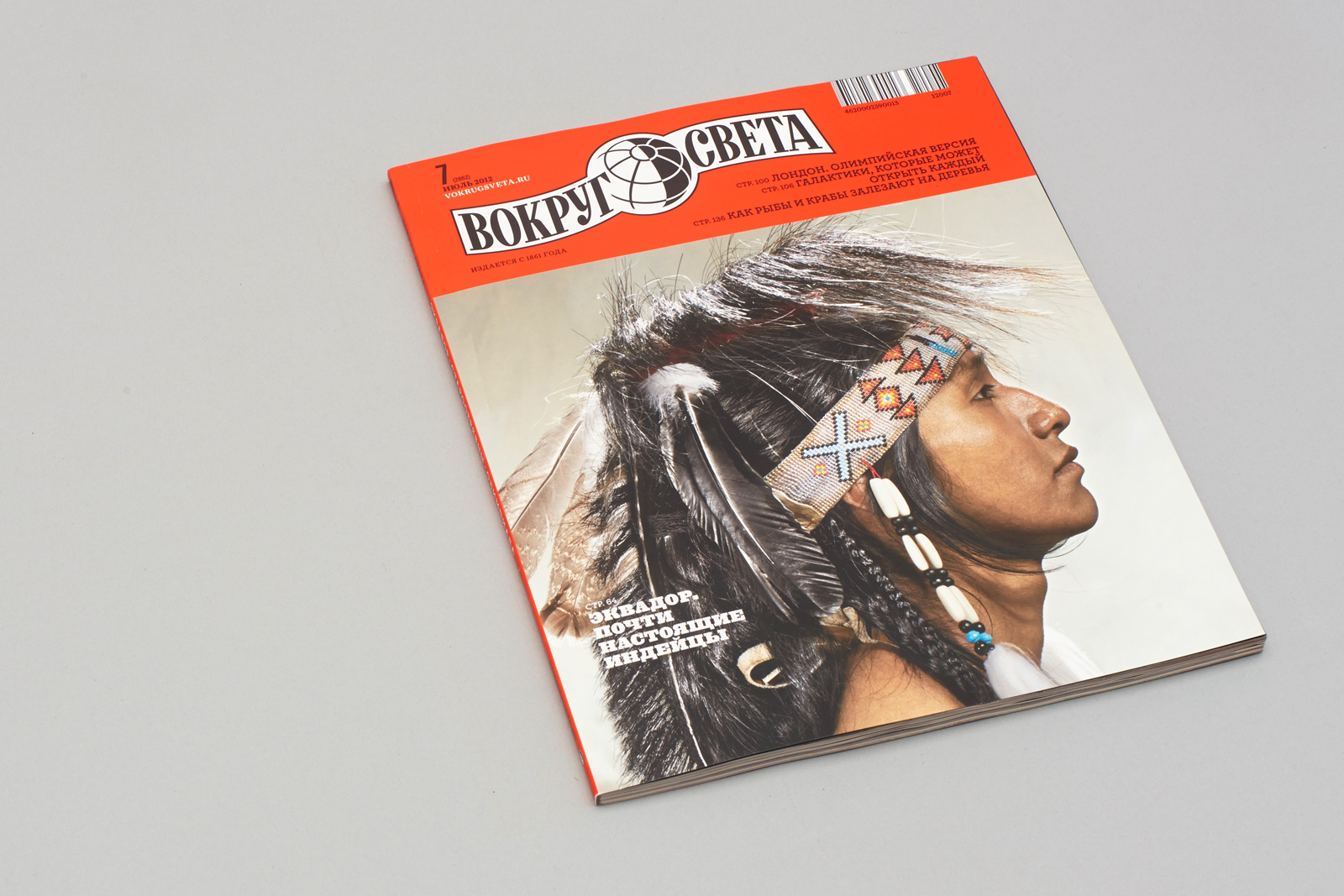
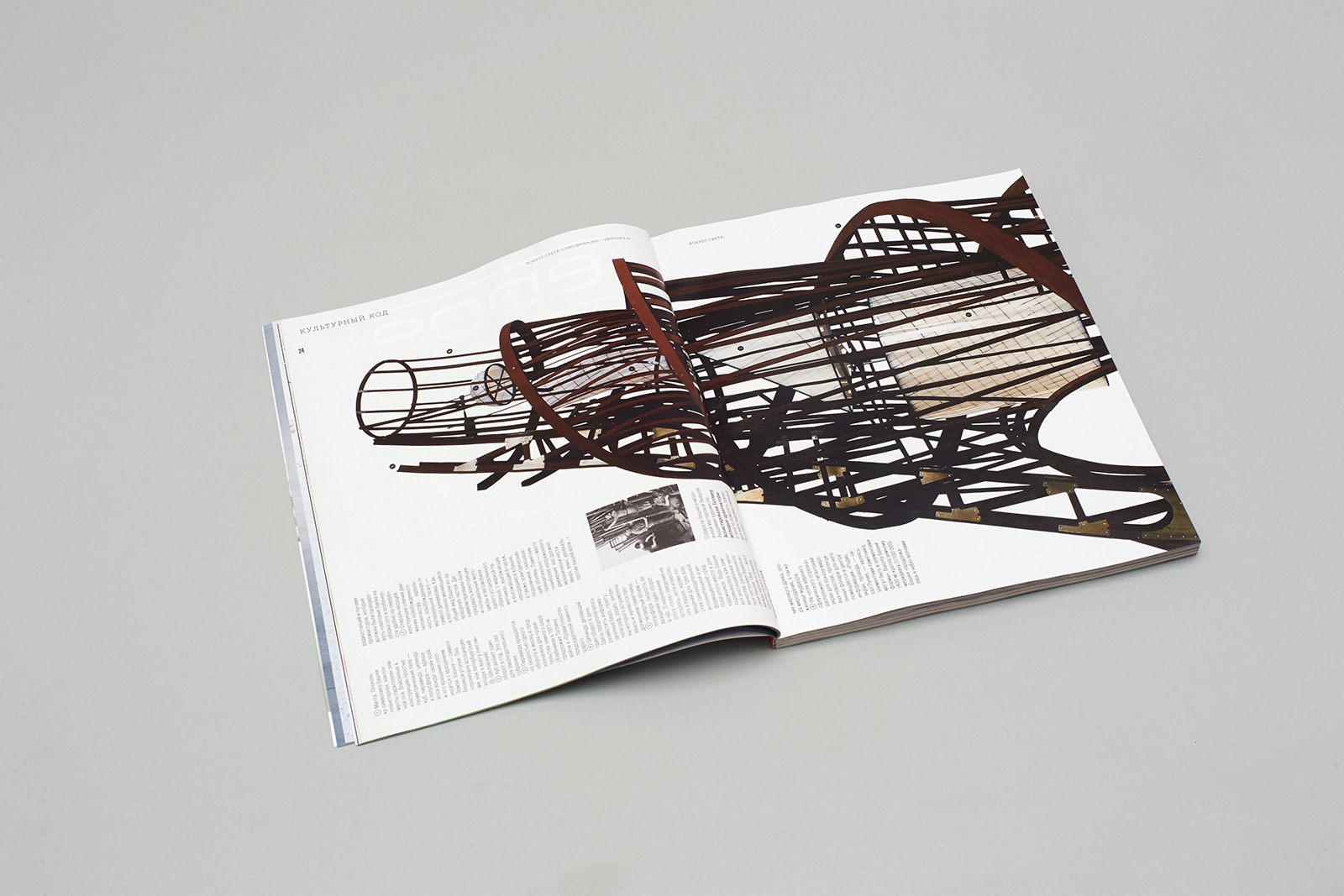
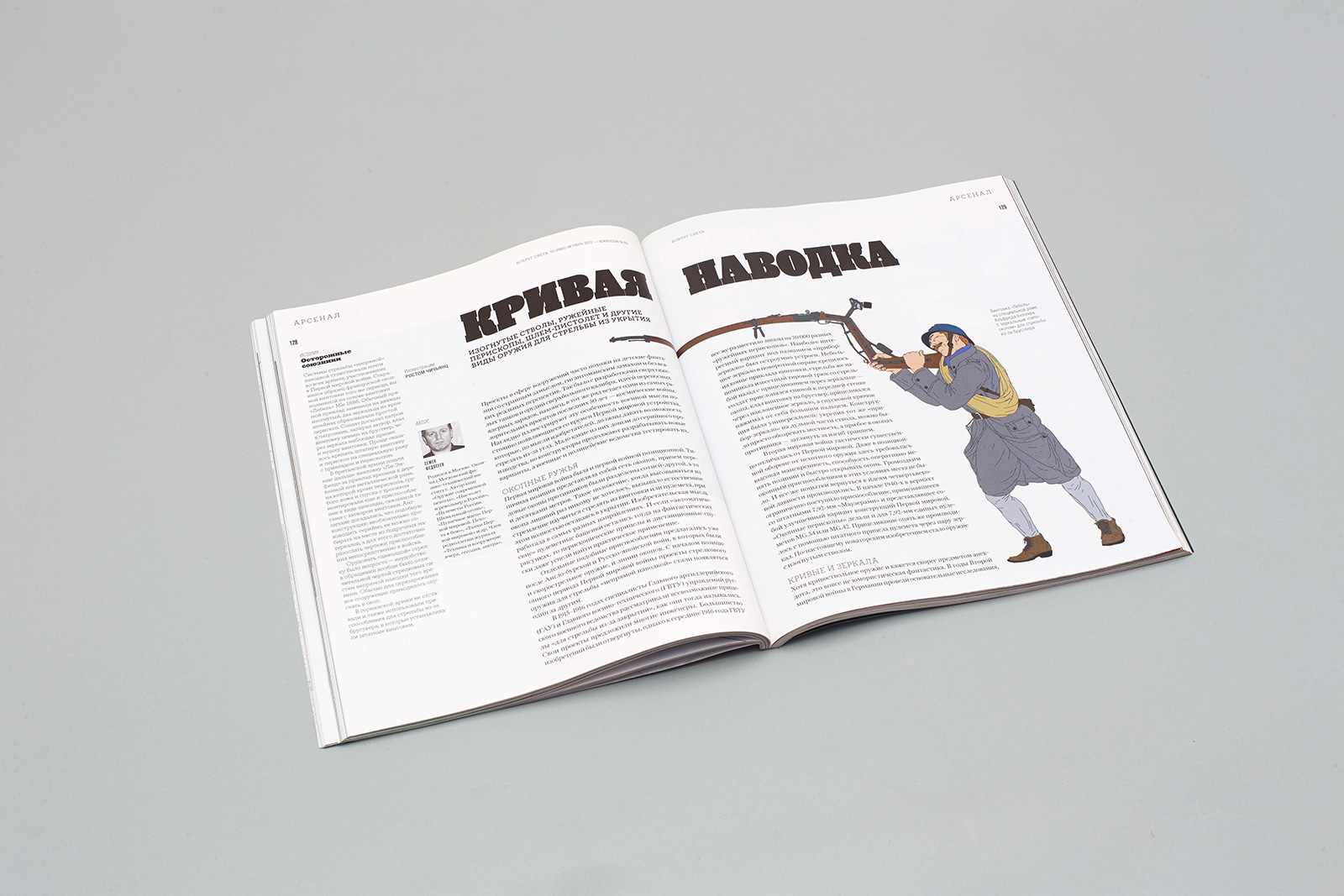
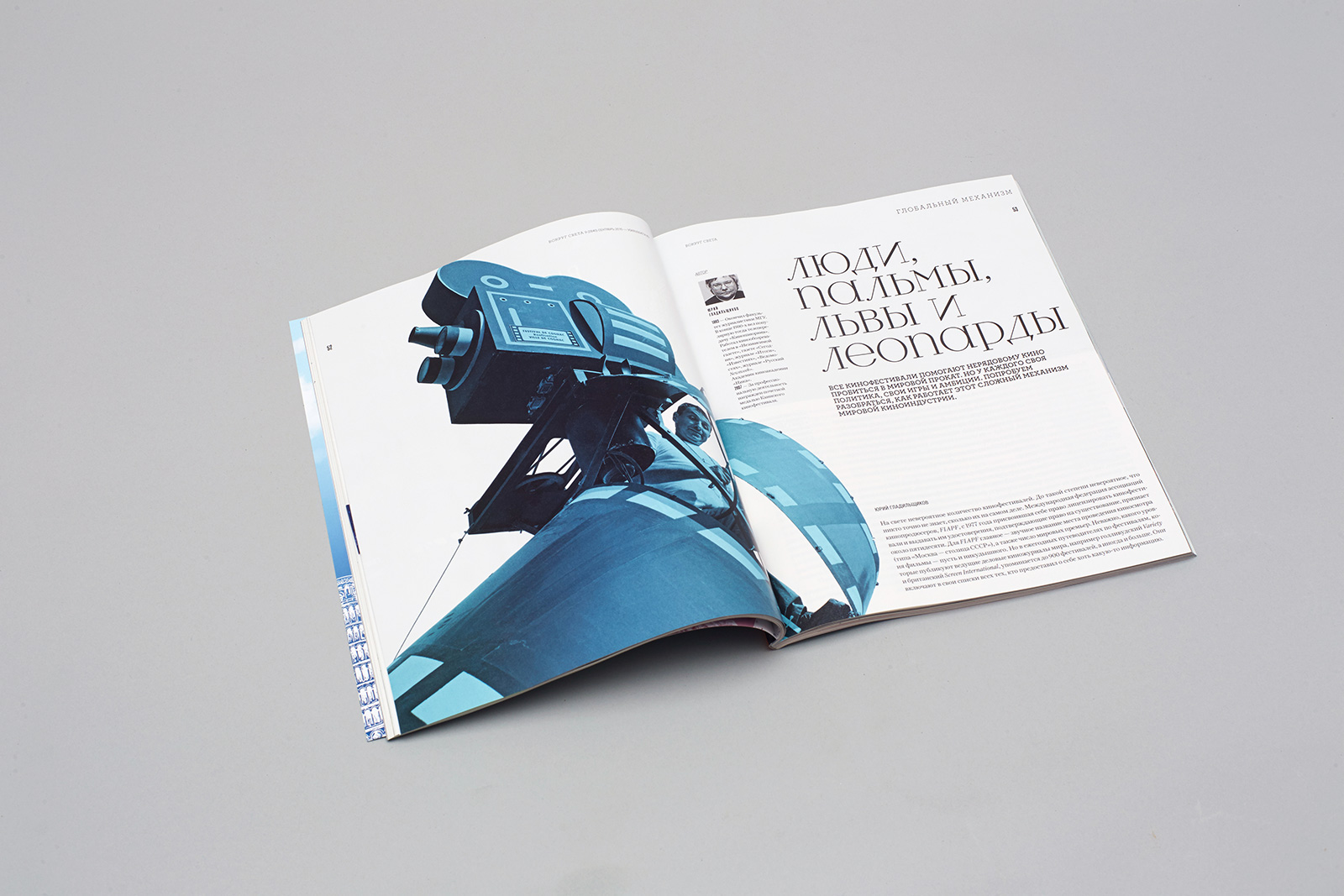
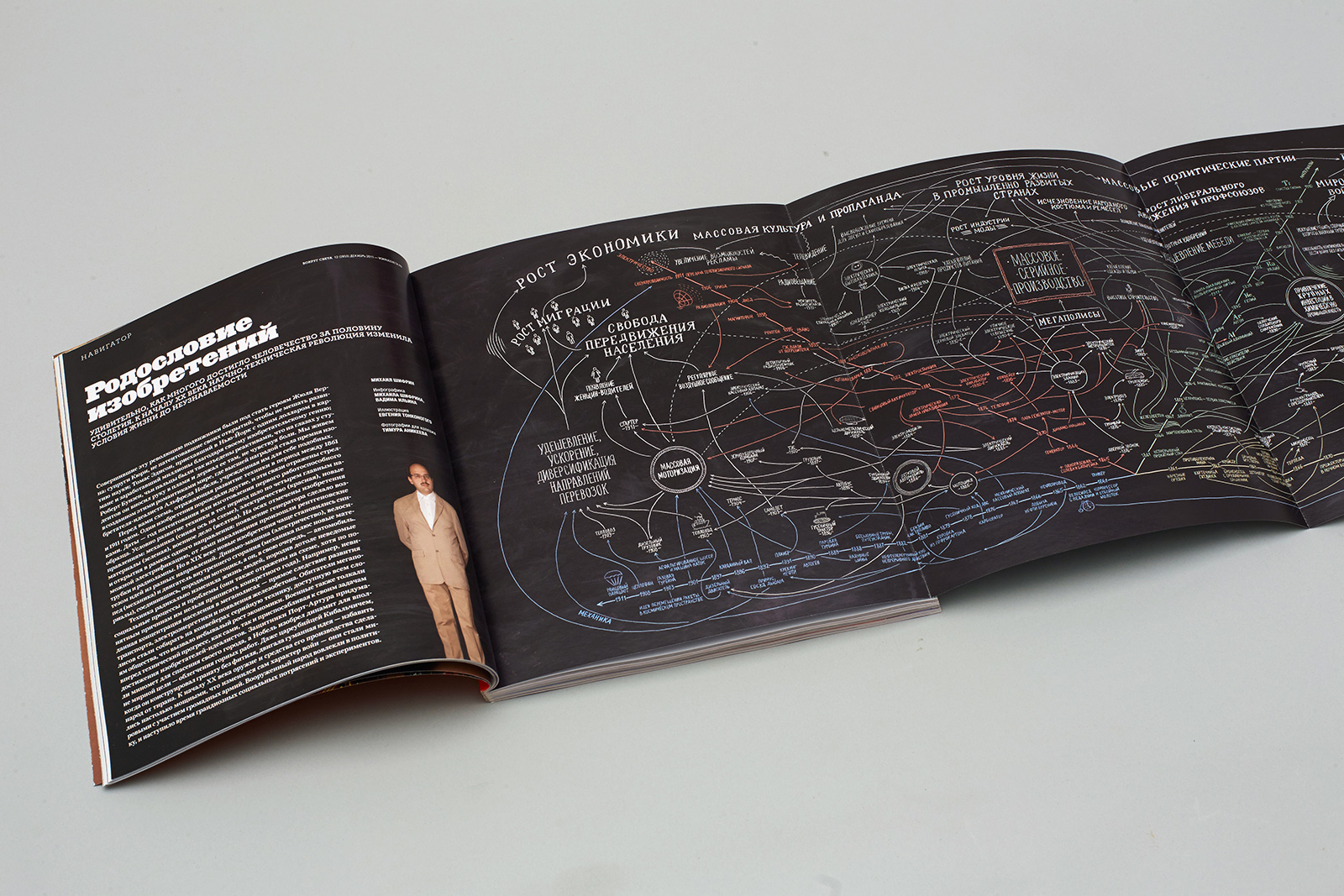
The impact of scientific inventions on the society in 1861–1911. Illustration by Evgeniy Tonkonogiy.
Другие проекты
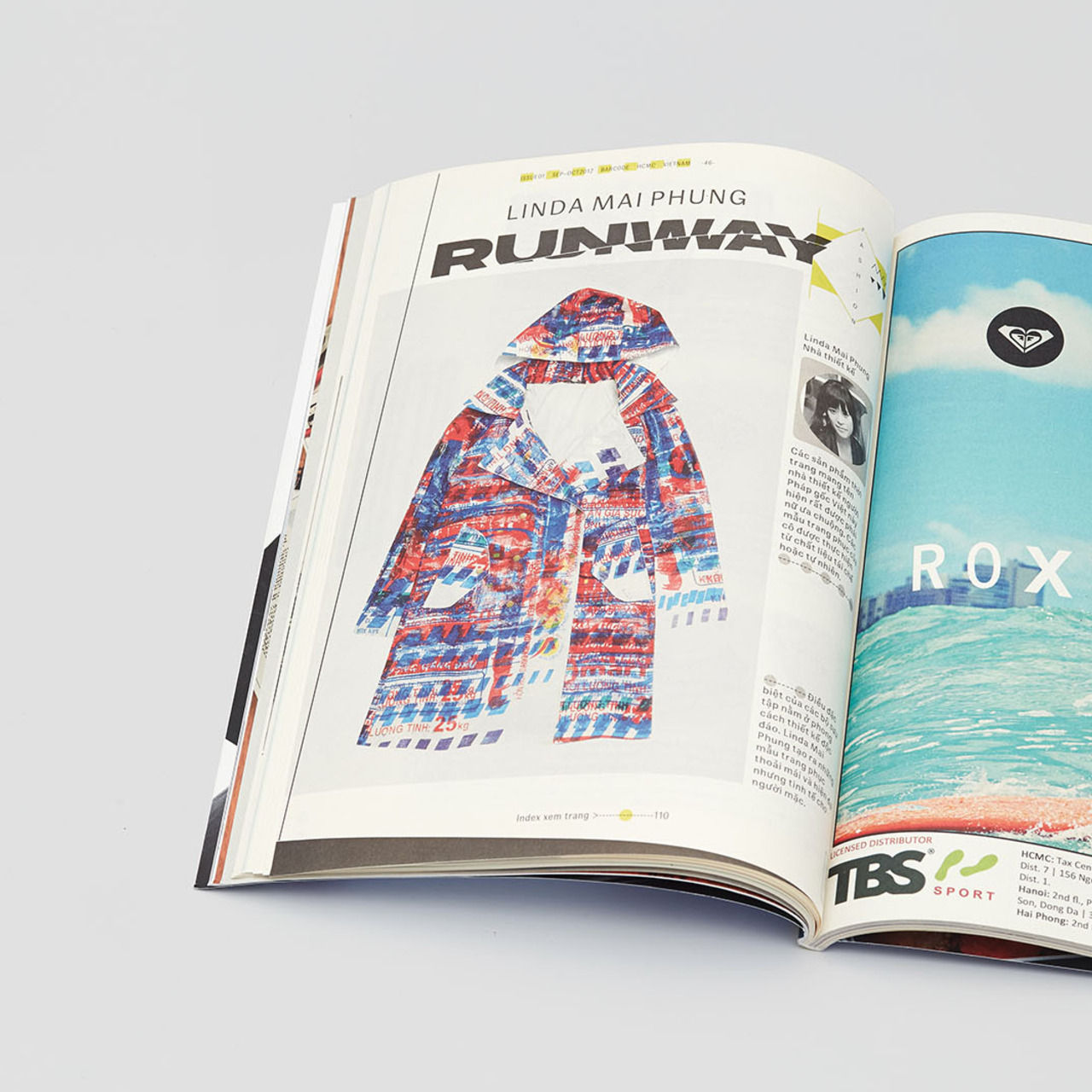 Barcode City magazineMagazine
Barcode City magazineMagazine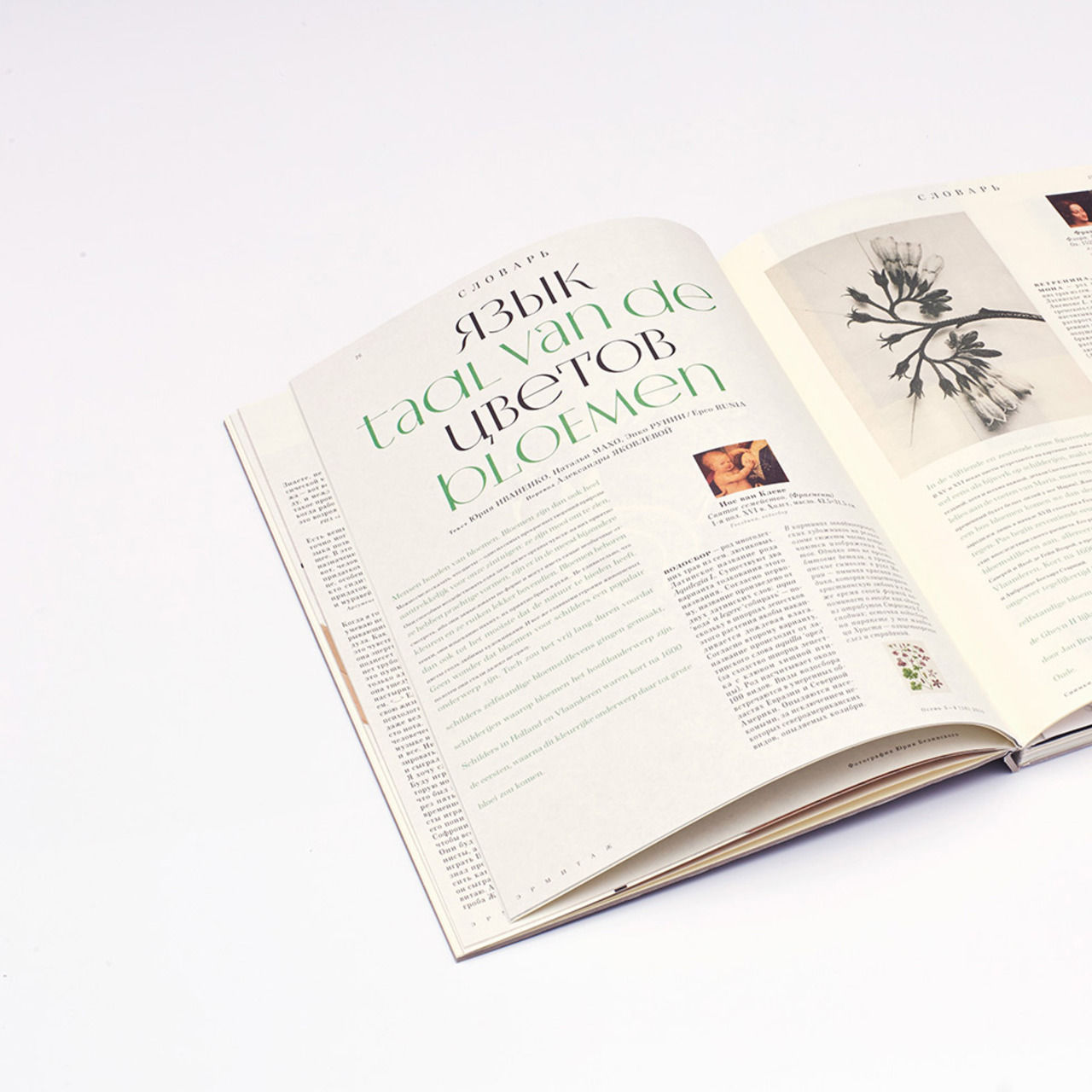 Hermitage magazineMagazine
Hermitage magazineMagazine